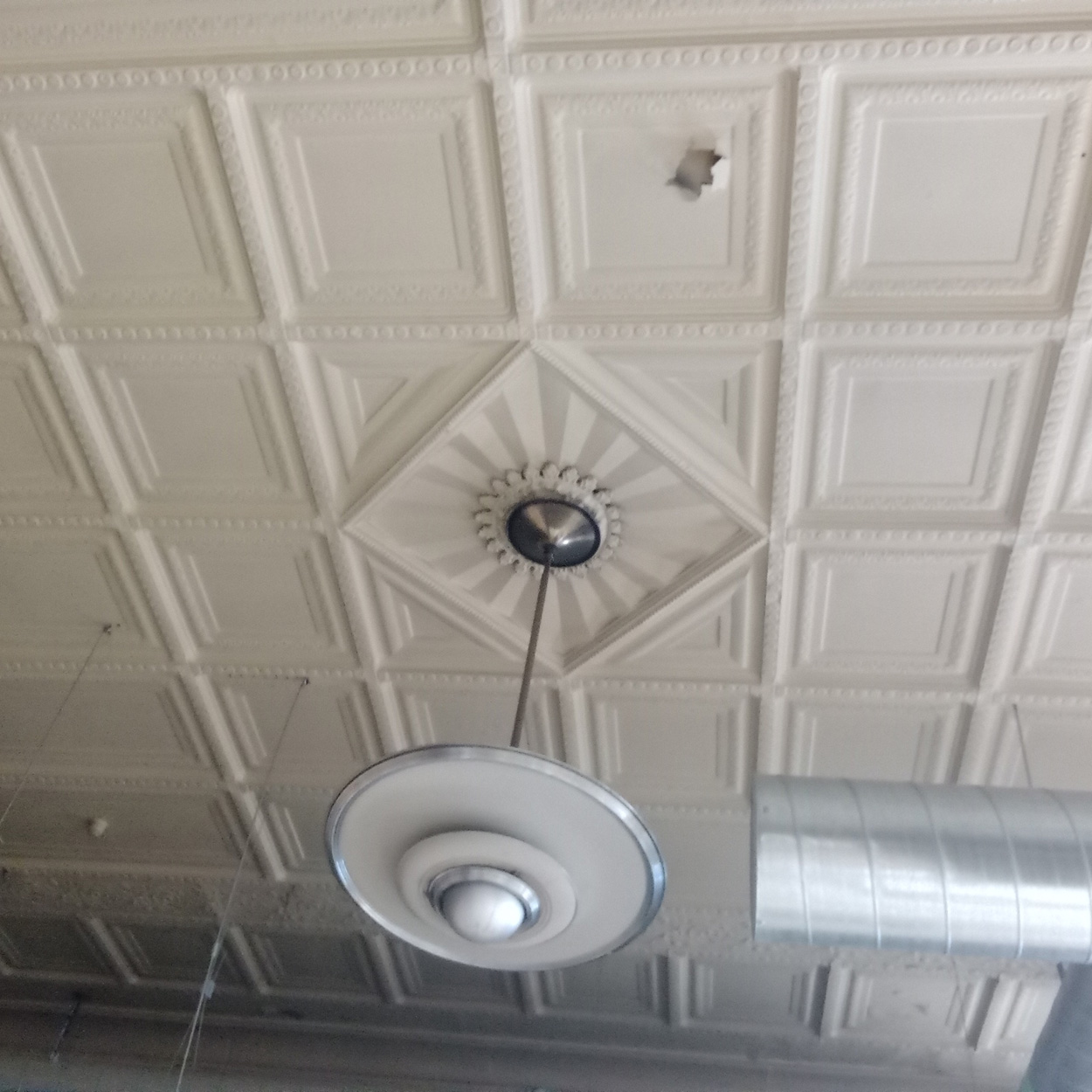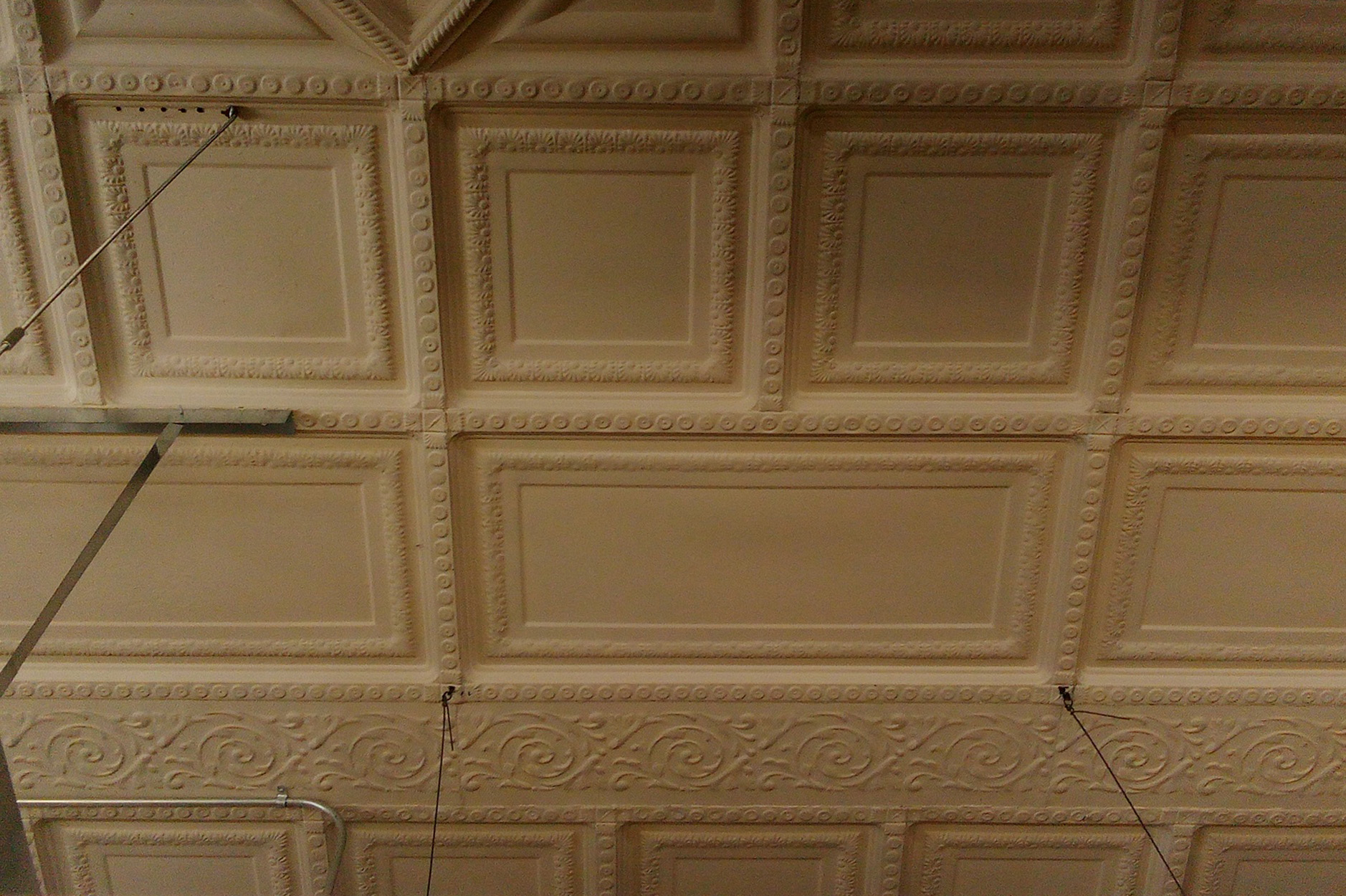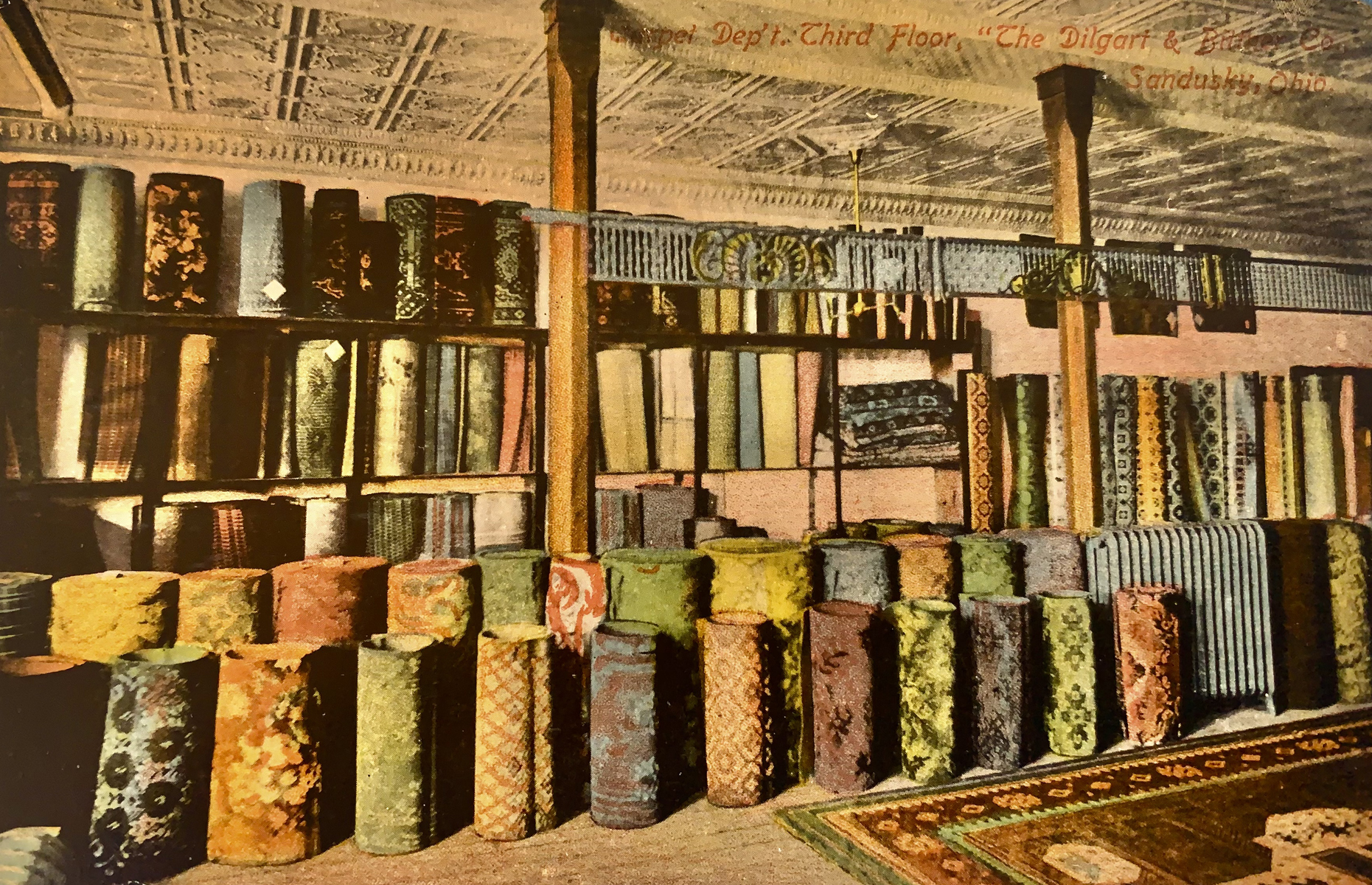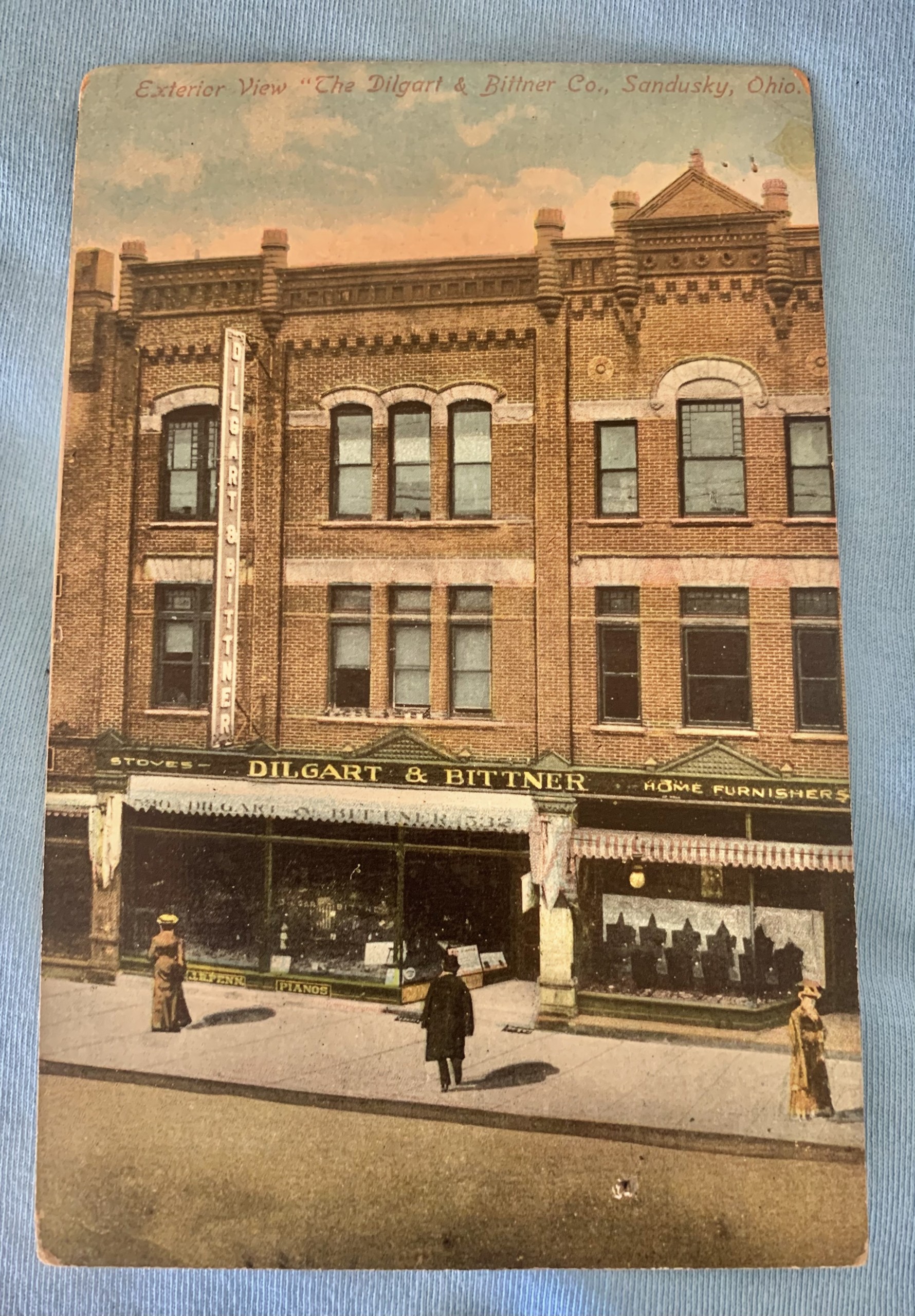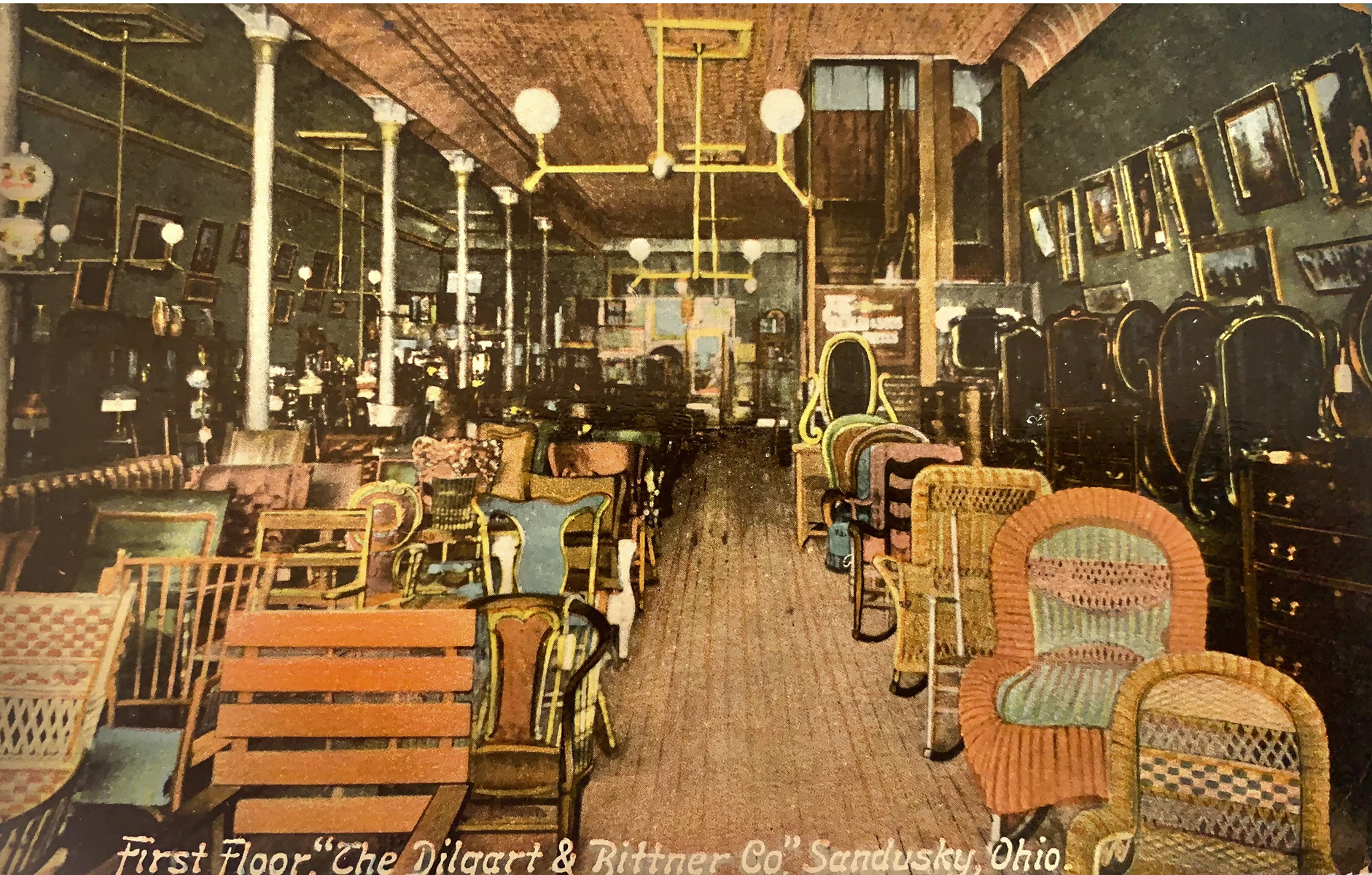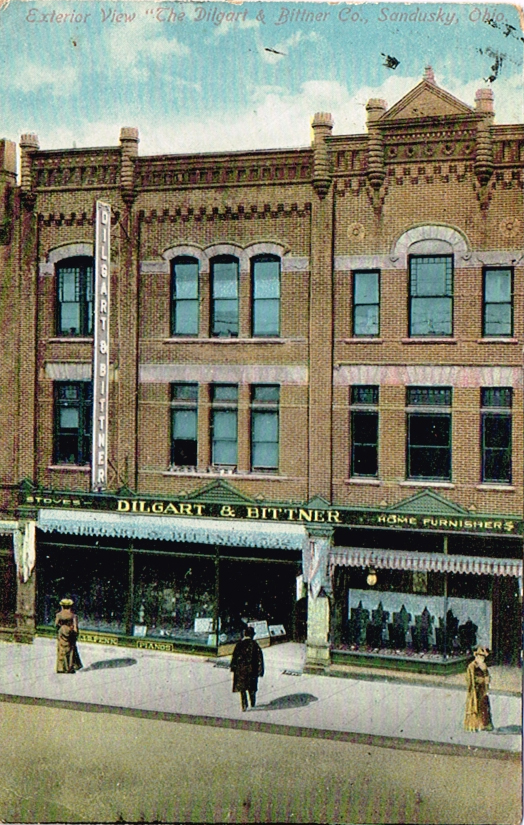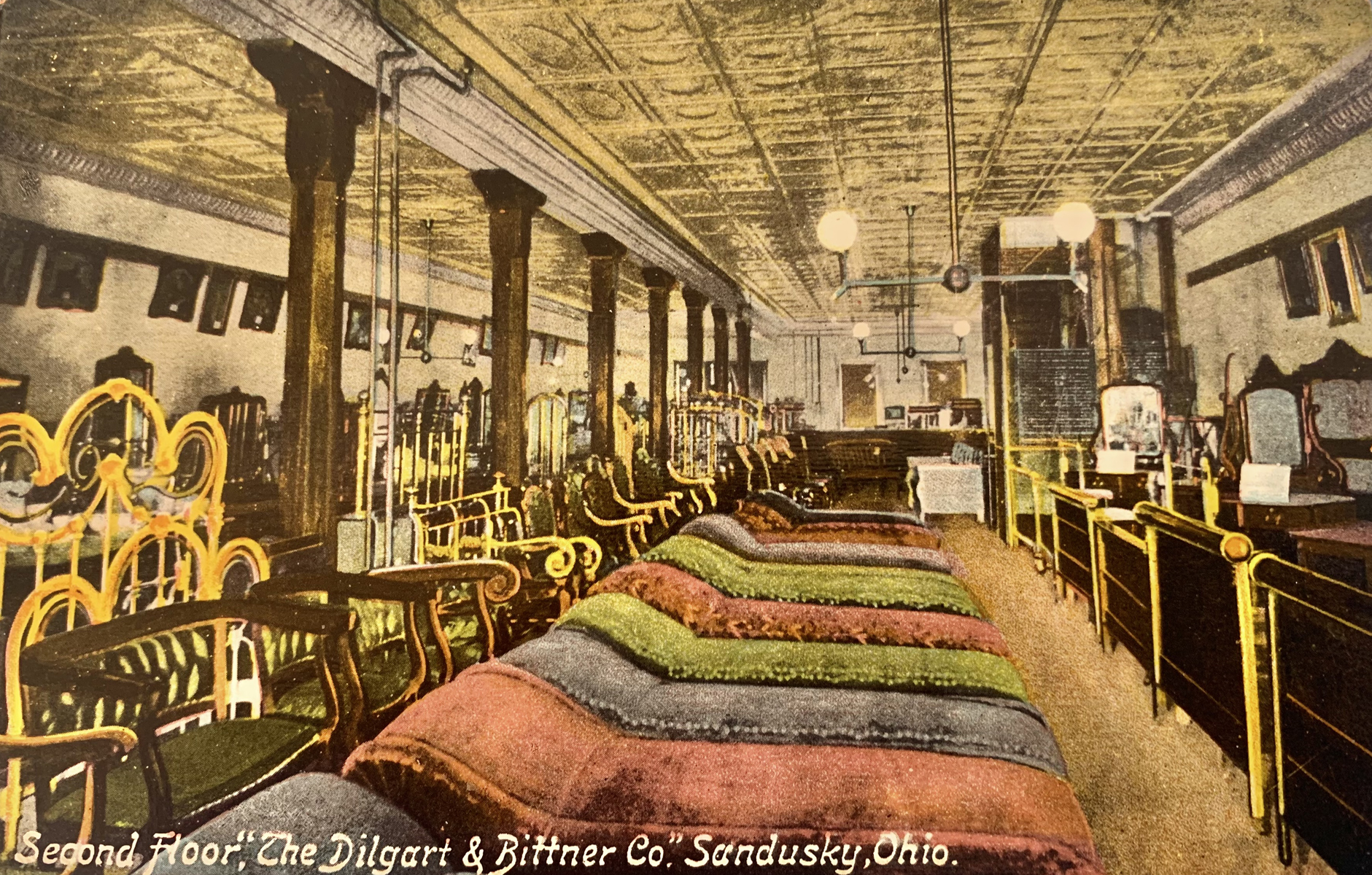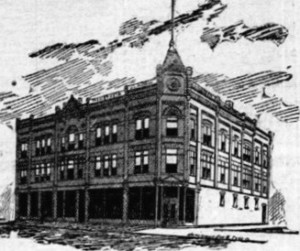
THE SCHMIDT BUILDING
This building was built by Sandusky contractor George W. Doerzbach in the Spring of 1894. It originally was a 100 foot square brick structure. An article in the Sandusky Register of March 30, 1894 reported that the foundations of the building were blasted out of the stone bedrock. That stone was then used in the basement and the first floor. Klotz and Kromer provided the engines that drove the elevator. A tin roof was put in by J. Mertz and Son, and the interior painting was done by Holland and Tebbutt. Total cost was $40,000 (about $1.2 million today).
The Sanborn Insurance Maps show that this building was originally planned to be built as a 3-story brick wine cellar for the Engels & Krudwig Wine Co, which had a building across the street. Instead of occupying the entire building, the basement was leased to the company, which pressed 400 tons of grapes in the fall of 1893, while the construction was still ongoing.
In April of 1894, the J. L. Hudson Store opened at this location, after having previously done business in the Hubbard Block. The J. L. Hudson Company, which had its headquarters in Detroit, claimed that their store was the largest and finest in Erie County.
For a short time, John J. Healy operated a retail store at the site of the former J. L. Hudson store. Shortly after Hudsons closed, Dilgart & Bittner moved in. Later, Jacob H. Herman sold furniture and carpets here for many years, until Bing’s Furniture moved to this site in the 1940s. Since 1987, Value City Furniture has been in business at the southeast corner of Market and Wayne Streets in Sandusky. You can find out more about this building and its occupants HERE.
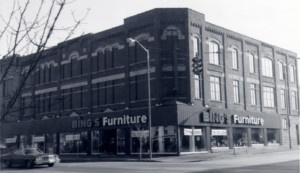
The building once housed Bing’s Furniture.
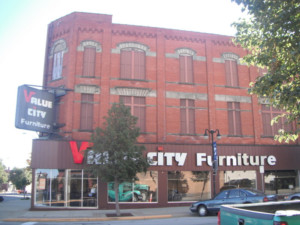 Value City Furniture had made this building their home since 1987.
Value City Furniture had made this building their home since 1987.
Walking around the store, it appears that the ceiling has been lowered. That is not the case. Instead a series of free-standing drop ceiling panels were installed. Why is this interesting? Because above these panels is the ORIGINAL tin ceiling and some of the old light fixtures.
Sandusky Register, March 28, 1894 – HUDSON’S STORE – A Palatial Establishment in the Schmidt Block
It will be Opened to the Public Today Under Very Favorable Auspices
Mr. J. Peffer Hicks, the enterprising local manager for John L. Hudson, the clothing king, says Hudson’s new store in the Schmidt block at the corner of Market and Wayne streets is the best appointed store of its kind in Ohio.
That’s a big statement to make, but nevertheless it is true, ‘Farmer’ Hicks never lies. It is his George Washingtonian honesty in business matters that has made both himself and the firm he represents in this city so popular. The public will be able to prove his assertion when they attend the opening, which occurs at 1 o’clock today. A Register reporter had a private view yesterday.
The store occupies the southeast corner of the handsome stone and brick block which Mr. A. Schmidt, junior, has erected, and contains two floors 100 feet deep and 43 feet wide.
As the visitor enters today by the main door he will find himself confronted by a sort of triumphal arch with the word ‘Welcome’ worked out in large letters. He will not know which way to turn at first, but if he follows the example of our reporter he will first turn to the left and gaze with fondness upon the choice and dazzling stock of neckwear and gents’ furnishing and still keeping to the left will inspect the new styles of hats and caps that are shown. Passing down between the long row of tables he will have an opportunity to inspect the spring styles of clothing and some pretty styles they are. To look at the patterns of high brown checks and greys will make him long for seventy in the shade and Cedar Point; and when he goes further and sees the countless styles and prices of clothing he will agree with Shakespeare that “the apparel oft proclaims the man.” There are clothes for men in all walks of life; clothes for stout men, clothes for thin men, clothes for medium sized men and clothes for men whose purses are fat or slim. William Gerald has charge of the gent’s furnishings and hats and caps, and our old friends Wm. Schumacher, John Haley and Charles H. Goss will be perfectly suave and patient while patrons are making up their minds amidst the bewilderment of choice as to which suit of clothes is best for them and their purses.
At the south end of this walk the visitor will peep into the cozy dressing and toilet rooms which have been fitted up for patrons, and looking up he will see a balcony office where the cashier will sit in receipt of customs and where the popular J. P. H. has his desk so that he can command a full view of the store and smile down graciously upon the old and new friends who are going to call on him. He will also see the steel wires converging in the office above from every direction of the store, upon which will run the cash carriers whose clocking as they dump their contents at the cashier’s desk will be sweet music to the only J. P. H.
Then the visitor will make the acquaintance of Mr. P. H. Schneider, who has charge of the dry goods department, with a corps of able lady assistants. And this is a dry goods department. It extends the whole length and occupies one half of the store, with two rows of counters, elegant show cases etc. Mr. Schneider is an old and trusted employee of John L. Hudson and he received the greater part of his experience in the Detroit store. He is not unknown in this part of Ohio and will be better known soon. Hicks says what Schneider doesn’t know about dry goods isn’t worth knowing, and as Hicks is the manager he ought to know. Schneider is proud of his department, and justly so. He points with pride to the admirable arrangement of the shelving and the counters and descants upon the beautiful stock that those shelves contain. Dress goods are to be seen in all styles, shades and prices; silks, laces, trimmings, linens, calicoes and other dry goods are shown in great profusion of design and price and there is a line of notions that can not be beaten. One great point about the stock is that it is all brand new and admirably chosen. It is worth a man’s while to inspect this stock if only to get an advance view of the pretty prints which the summer girl is going to wear very soon. These are choice and increase the longing for the boat rides and trips to Cedar Point which will soon materialize.
When he has completed his tour of the first floor the visitor whose curiosity knows no bounds will ask what’s to be seen on the second floor. Anticipating the answer he will receive we will tell him that that is used as a surplus stock room and as soon as the shelves on the lower floor are depleted, their stocks will be renewed from this source. He’ll not want to leave so soon and he can just examine the fittings which are all hardwood and of fine workmanship. It will also be noticed that the store is well lighted by windows, lofty and airy, with arc and incandescent electric lights and gas chandeliers.
When the reporter visited the place yesterday he found the window blinds drawn. Of course he wanted to see inside the dust proof window cases and was given a private view, but only under a promise not to reveal what he saw. It can be said, however, without a breach of faith that the windows will surprise the visitor when the blinds are raised and their contents displayed to view.
To put it shortly, pointers have been taken from J. L. Hudson’s mammoth stores in Detroit, Cleveland, Buffalo, Toledo, St. Louis and St. Paul and the best of each has been incorporated in the arrangement of the Sandusky store. With so many stores to stock, Hudson’s buyers have a pull in the market which smaller concerns have not and the purchasing power of this big concern is turned to the benefit of Hudson’s customers. Another thing that enables profits to be cut fine is that a strictly cash business will be done.
The store will open at 1 o‘clock to-day and Mr. Hicks has hired an orchestra to entertain the guests at the house warming.
Shortly after Hudsons closed, Dilgart & Bittner opened their doors in this building. Many of the features of the original building are visible in these photo postcards.

